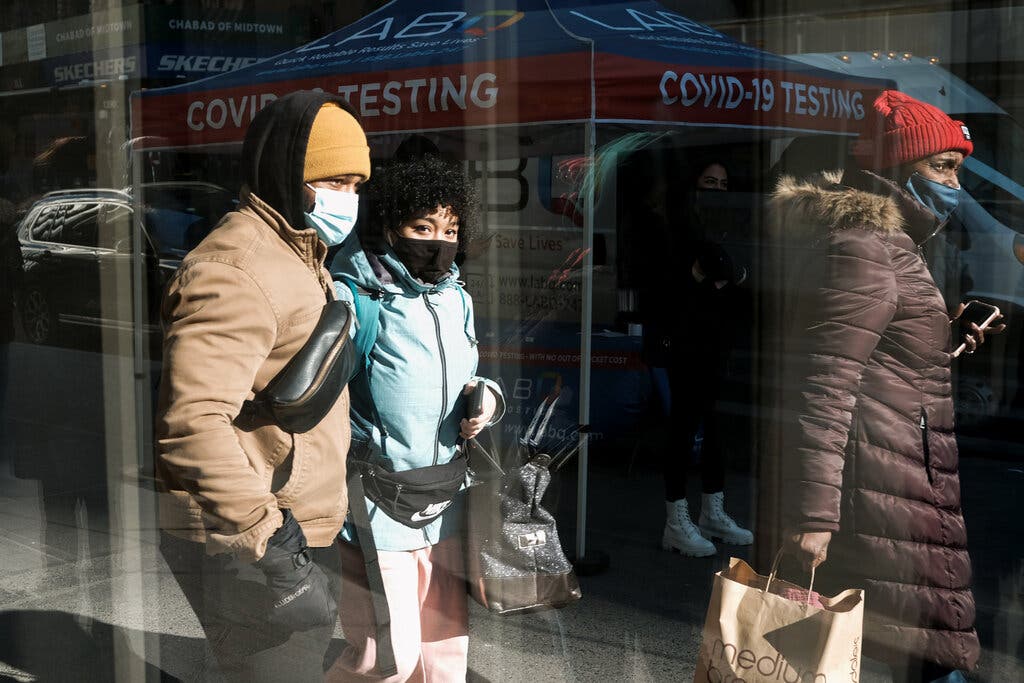According to a recent research from the Centers for Disease Control and Prevention, more than half of persons who conducted a quick antigen test between five and nine days after initially testing positive for the coronavirus or after exhibiting Covid-19 symptoms scored positive on the antigen test.
The discovery raises more questions about the agency’s new isolation rules, which state that many persons with Covid may be released from isolation after five days if a coronavirus test comes back negative.
A scientist from the Centers for Disease Control and Prevention who was a co-author of the paper said that he did not feel the agency’s isolation standards needed to be changed. However, according to the experts, the findings show that many persons infected with the virus may still be infectious throughout this time period.
In an email, Angela Rasmussen, a virologist at the Vaccine and Infectious Disease Organization at the University of Saskatchewan, said the research “demonstrates what a lot of people have suspected: that five days is inadequate for a considerable percentage of patients.” “The basic conclusion,” she said, “is that this should undoubtedly result in a revision in isolation recommendations.”
The study was carried out after Omicron became the main variation in the United States and as instances were increasing in frequency throughout the country. Since then, the number of reported cases has dropped significantly, lowering the danger of infection and the number of Americans who are being held in isolation.
As the Omicron form spread, the Centers for Disease Control and Prevention (CDC) reduced the isolation time from 10 days to five days in December. Many public health experts were critical of the decision, pointing out that individuals might still be contagious after five days and that permitting them to leave isolation without being tested could contribute to the spread of the new type.
Dr. Ian Plumb, a medical epidemiologist at the Centers for Disease Control and Prevention and one of the study’s authors, said he believed the findings “basically supported” the agency’s current isolation guidance, which asks people to continue taking precautions — such as wearing masks and refraining from travel — until 10 full days have passed.
Those who reported coronavirus illnesses to the Yukon-Kuskokwim Health Corporation, which provides health care to remote areas in southwestern Alaska, between January 1 and February 9 were included in the current research.
Yukon-Kuskokwim released new isolation standards in the first week of January. Individuals who test positive for the virus or who develop symptoms of the virus are advised to isolate for a period of 10 full days. People who had no symptoms or symptoms that were resolving on Days 5 through 9 of their isolation periods, and who had not had fevers for at least 24 hours, were eligible for free Abbott BinaxNOW fast antigen tests, which were provided by Yukon-Kuskokwim staff members. If the tests came back negative, they would be able to terminate their isolation periods sooner.
54.3 percent of the 729 persons who performed antigen tests on Days 5 through 9 of their isolation periods tested positive, according to the results of the study. In the course of their isolation periods, the number of patients who tested positive decreased: 67.5 percent tested positive on Day 5 of their isolation periods, compared with 38.6 percent on Day 9.
The researchers discovered that those who had symptomatic infections were more likely than those who had been asymptomatic to test positive on Days 5 through 9 than those who had not. A primary vaccine series, such as two doses of a viral mRNA vaccine or one dose of Johnson & Johnson’s shot, or having been previously infected by the virus were found to be less likely than those who had not been vaccinated or had not been previously infected to receive positive antigen results during this time period.
According to Saskia Popescu, an infectious disease epidemiologist at George Mason University, “Ultimately, I don’t think this is unexpected based on the evidence we’re seeing and the broader worry from the infectious disease community about shortening isolation in the face of a new variation.” “However, I believe it is critical that we continue to evaluate this since antigen testing are not a perfect proxy for viral infectiousness and the capacity to spread the virus.”
In accordance with numerous other recent research, which have not yet been published in scientific publications or examined by outside specialists, the conclusions of this study are also valid. In one study, researchers discovered that more than 40% of vaccinated health-care workers scored positive on fast antigen testing on days 5 through 10 of their illnesses after being vaccinated against influenza.
A considerable number of persons with suspected and confirmed Omicron infections continued to have high viral loads more than five days after initially testing positive for the virus, according to the findings of two independent investigations.

